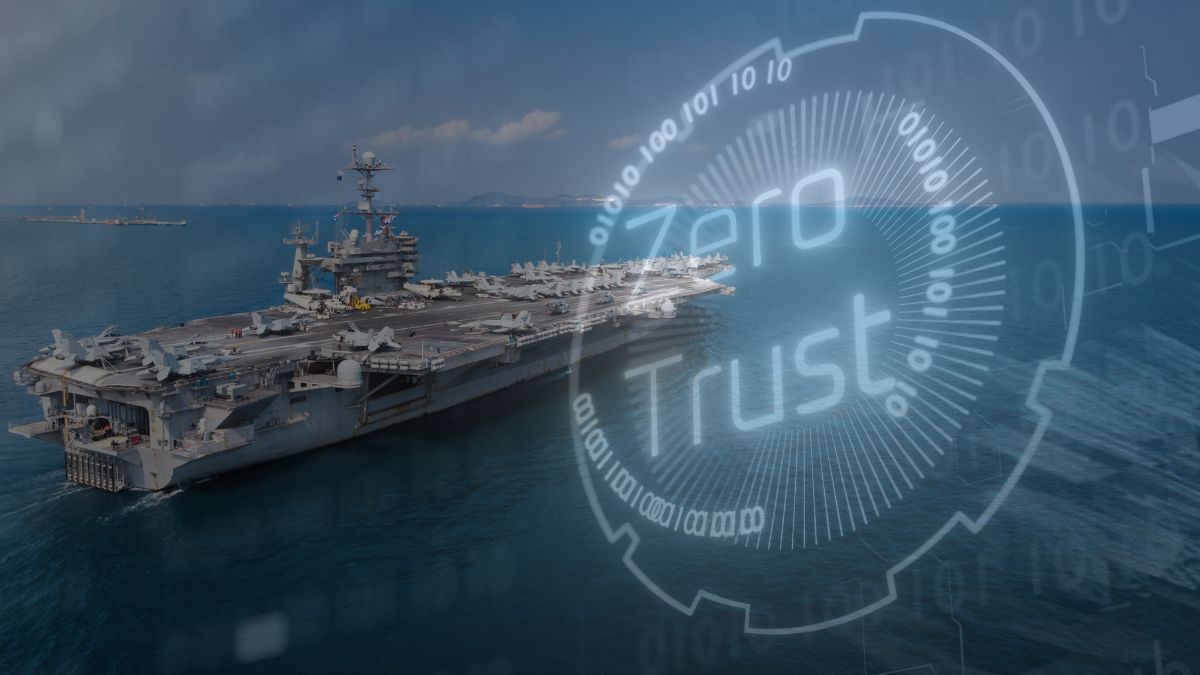The article is the last installment in a three-part series exploring zero trust security models and the defense industry. The first article in the series highlighted DoD zero trust initiatives and can be found here. The second piece in the series explored the evolution of zero trust and zero trust at the Edge; this blog is located here.
With a clear understanding of what zero trust is and how it came to be the new standard for security, the final area to explore is the steps on how to implement zero trust. This article describes the steps that organizations may take when adopting a zero trust security mindset.
Why Adopt Zero Trust?
Historically, many organizations have used a perimeter-focused security model for controlling access to corporate IT assets. Everyone inside the perimeter is extended a level of trust, while threats are assumed to originate from outside, and security solutions were designed to keep them out.
This model has its flaws, and the zero trust security model attempts to address them. Under a zero trust model, users, applications, devices, etc., are granted only the access and permissions required for their role. Every request for access to corporate resources is evaluated against these permissions before granting or denying access.
In the defense industry, adopting a zero trust security architecture will soon be necessary to work on defense contracts. However, organizations should also look to adopt it for their own sake due to the significant security benefits that it provides.
Best Practices for Implementing Zero Trust
A zero trust security architecture helps defense contractors protect their infrastructure and data and maintain compliance with DoD regulations. Some key steps toward implementing an effective zero trust program include the following:
- Implement Micro segmentation: Zero trust security requires the ability to authenticate every request for access to a corporate asset. Zero trust network access (ZTNA) or similar security solutions are also used to to microsegment the network. By defining trust boundaries around each application or resource, an organization ensures that only authenticated users can access it.
- Specify Roles: Zero trust security uses least privilege access controls, which only grant a user the set of permissions needed for their role. The first step in defining these permissions is clearly specifying the various roles that exist within an organization and their associated duties.
- Define Access Controls: Based on clearly-defined roles, the organization can determine the set of permissions needed for those roles. These permissions can then be defined and enforced using role-based access control (RBAC) or a similar identity and access management (IAM) framework.
- Build Zero Trust Architecture: A zero trust security model needs to be backed up and enforced by compatible infrastructure. Select solutions that meet the needs of the business and can support zero-trust access controls such as ZTNA and SASE.
- Monitor and Refine: Zero trust architectures commonly needs ongoing adjustments and refinements. As the corporate IT infrastructure grows or roles evolve, changes may need to be made to the zero trust architecture or access controls to reflect these.
Starting Your Zero Trust Journey
Zero trust adoption has accelerated rapidly in recent years across both the public and private sectors. As regulatory and contractual requirements begin mandating zero trust, having the infrastructure and solutions in place can be invaluable for defense contractors’ ability to compete and complete contracts.
An effective zero trust program is one that touches all aspects of an organization’s operations, including the development of its products and solutions. To learn more about incorporating zero trust security principles into your organization’s software, contact us.
Further Reading in this Series:
- Transforming DIB Security with Zero Trust – Part 1
- Transforming DIB Security with Zero Trust – Part 2





